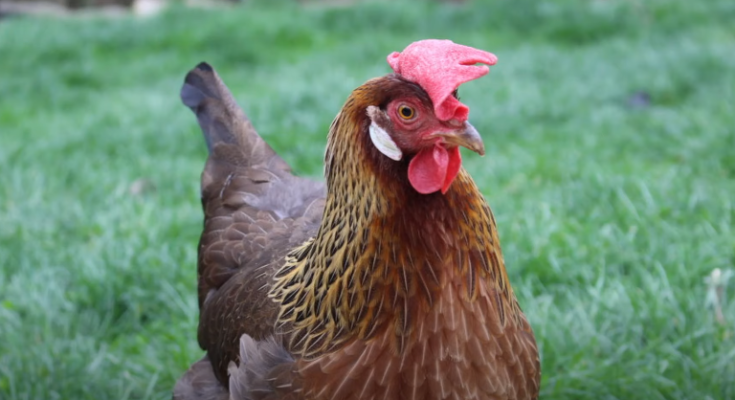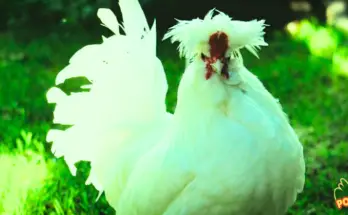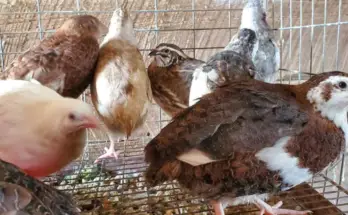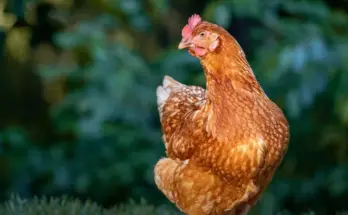A Comprehensive Guide to Characteristics, Care, and Heritage:
Introduction:
The global of chicken farming is big and numerous, with severa chicken breeds each owning particular developments and characteristics. Among those, the Brown Leghorn stands proud as a tremendous breed known for its first-rate egg-laying capabilities, hardiness, and wonderful look. In this complete guide, we can delve into the charming international of the Brown Leghorn fowl breed, exploring its history, traits, care requirements, and contribution to the rooster enterprise.
Historical Roots of the Brown Leghorn:
The Brown Leghorn chook breed has its roots deeply embedded inside the rich records of chicken farming. Originating in Italy, the Leghorn breed became to begin with developed in the port metropolis of Livorno, from where it obtained its call. The breed gained prominence inside the United States throughout the 1800s, becoming a staple in American rooster farming.
Early Development and Purpose:
The Leghorn breed became selectively developed for its egg-laying prowess and adaptableness to various climates. Early breeders targeted on refining its characteristics to create a hardy and efficient hen suitable for both outside flocks and commercial egg production. The Brown Leghorn, with its extraordinary plumage and first rate overall performance, emerged as a popular variety within the Leghorn circle of relatives.
Arrival inside the United States:
The Brown Leghorn arrived within the United States at some point of the early 1800s, fast gaining choose amongst fowl keepers for its prolific egg manufacturing. As the demand for eggs extended, the breed’s popularity soared, and it have become a cornerstone of the American hen enterprise.
Characteristics of the Brown Leghorn:
The Brown Leghorn possesses a fixed of particular physical and behavioral trends that distinguish it from different chicken breeds. Understanding those traits is critical for those interested in elevating or breeding Brown Leghorns.
Appearance:
Plumage: The Brown Leghorn is characterized through its smooth and sleek brown plumage, which affords great camouflage in a herbal environment. The feathers are tight and near-fitting, contributing to the breed’s streamlined look.
Comb and Wattles: The breed capabilities a huge single comb and properly-described wattles, both of which can be bright pink in shade. These developments are not best aesthetic however also aid in temperature regulation, specially in hotter climates.
Body Structure: Brown Leghorns have a slender and athletic build with lengthy legs. Their our bodies are nicely-proportioned, contributing to their agility and ability to forage efficiently.
Size and Weight:
Brown Leghorns are considered a medium-sized hen breed. Hens normally weigh among four.5 to six pounds, even as roosters can attain weights of 6 to 7 kilos. These moderate sizes make them easy to address and appropriate for each outdoor and industrial settings.
Egg Production:
Prolific Egg Layers: The Brown Leghorn is famend for its high-quality egg-laying talents. Hens can produce an outstanding 280 to 320 huge brown eggs yearly. This prolific nature has made them a desired preference for business egg production.
Early Maturation: Brown Leghorns attain maturity tremendously early, with hens commonly beginning to put eggs at around 4 to 5 months of age. This early maturation provides to their appeal for those seeking a quick return on investment in egg production.
Temperament and Behavior:
Active and Alert: Brown Leghorns are acknowledged for his or her lively and alert nature. They experience foraging and are extraordinary at locating their very own food. Their alertness also makes them appropriate without cost-ranging, as they can quick get away from potential predators.
Independence: These chickens tend to be more independent in comparison to some other breeds. While they may be not necessarily unfriendly, they may not be as affectionate as a few outdoor chook keepers would possibly decide on.
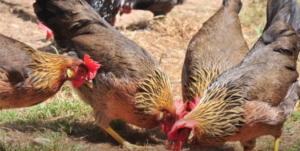
Housing and Care Requirements:
To ensure the well-being and productivity of Brown Leghorns, it’s important to offer them with appropriate housing and care. Whether you are raising them in a outside placing or a business operation, positive issues will make contributions to their typical fitness and happiness.
Coop Design:
Ventilation: Adequate air flow is critical inside the coop to prevent the accumulation of moisture and ammonia. Brown Leghorns thrive in properly-ventilated environments, and proper airflow supports respiratory fitness.
Roosting Space: Provide enough roosting area for the chickens to perch with no trouble at night time. The roosts must be better than the nesting boxes to deter slumbering in the egg-laying region.
Nesting Boxes: Brown Leghorns, like many chickens, decide on secluded and personal nesting containers. Adequate nesting area ensures that hens can lay eggs in a pressure-unfastened surroundings.
Diet and Nutrition:
High-Quality Feed: A well-balanced and nutritionally entire hen feed is vital for the fitness and productivity of Brown Leghorns. Choose a feed in particular formulated for laying hens to fulfill their multiplied calcium and protein necessities.
Access to Fresh Water: Ensure a constant supply of smooth and sparkling water. Dehydration can lead to a decline in egg manufacturing and typical health. Automatic waterers are convenient for retaining water availability.
Foraging Opportunities: Brown Leghorns are herbal foragers. Providing get entry to to outdoor regions or incorporating foraging sports within the coop promotes mental stimulation and lets in them to exhibit natural behaviors.
Health Management:
Regular Health Checks: Conduct regular health tests to perceive any signs and symptoms of illness or parasites. Prompt intervention can save you the unfold of diseases and make sure the overall nicely-being of the flock.
Vaccination: Follow recommended vaccination protocols to protect Brown Leghorns from not unusual hen diseases. Consult with a veterinarian to create a vaccination schedule suitable on your specific place and instances.
Parasite Control: Implement a parasite control software to shield in opposition to inner and outside parasites. Regular deworming and the use of rooster-pleasant pesticides make contributions to a healthful flock.
Breeding and Reproduction:
Breeding Brown Leghorns calls for careful attention of genetics, choice criteria, and right management practices. Whether you’re breeding for egg manufacturing or retaining the breed’s widespread, these guidelines will useful resource in a success breeding.
Selecting Breeding Stock:
Egg Production: When selecting breeding stock, prioritize hens with a validated record of excessive egg production. Evaluate the laying performance of their ancestors to perceive genetic trends for prolific egg-laying.
Vigorous Roosters: Choose roosters that show off energy and good health. A strong and sturdy fowl contributes to a success mating and ensures the transmission of appropriate tendencies to the offspring.
Genetic Considerations:
Standard Conformance: If breeding for exhibition or adherence to reproduce requirements, ensure that decided on birds agree to the recognized characteristics of the Brown Leghorn. This includes plumage shade, comb kind, and universal frame shape.
Genetic Diversity: Avoid close inbreeding to preserve genetic variety inside the flock. Inbreeding can result in the expression of unwanted trends and compromise the general health of the breeding stock.
Incubation and Hatching:
Incubation Conditions: Maintain ideal conditions at some stage in incubation, which include temperature, humidity, and turning of eggs. Consistent tracking is important to make sure a excessive hatch price.
Brooding Chicks: Provide a warm and stable brooding surroundings for chicks. Use heat lamps or brooders to keep the ideal temperature for the duration of the early tiers of life.
The Brown Leghorn in Commercial Poultry Farming:
The Brown Leghorn has played a pivotal position inside the evolution of industrial egg manufacturing. Its prolific egg-laying abilities and efficiency in changing feed into eggs have made it a preferred preference for big-scale operations.
Commercial Egg Production:
Economic Viability: The Brown Leghorn is famend for its monetary viability in business egg production. The breed’s potential to continually lay massive numbers of splendid eggs has contributed to its tremendous use in big-scale egg farms.
Feed Conversion Efficiency: Brown Leghorns are regarded for their green feed conversion, meaning they could convert a tremendously small quantity of feed right into a huge range of eggs. This trait is surprisingly appropriate for maximizing profitability in commercial settings.
Challenges and Considerations:
Flightiness: Brown Leghorns are recognized for his or her flighty and energetic nature, which could pose demanding situations in sure industrial housing systems. Provisions for ok space and environmental enrichment can assist mitigate strain-associated problems.
Genetic Selection: In business settings, genetic choice is often prioritized to enhance precise trends along with egg production. This selective breeding has led to the improvement of excessive-performing traces in the Brown Leghorn breed.
Preservation Efforts and Heritage Breeding:
As industrialization and commercialization have become regular in chicken farming, there was a growing problem about the renovation of background breeds, together with the Brown Leghorn. Dedicated efforts by breed lovers and conservation companies intention to safeguard the genetic variety and ancient importance of those breeds.
Heritage Breed Conservation:
Importance of Genetic Diversity: Heritage breeds just like the Brown Leghorn make contributions to the general genetic variety of hen populations. Maintaining numerous gene pools is crucial for the lengthy-time period resilience of chicken populations towards sicknesses and environmental challenges.
Role of Breeder Associations: Breeder associations and chicken golf equipment play a vital role inside the conservation of history breeds. These businesses frequently set up standards, arrange exhibitions, and facilitate networking among breeders to promote accountable breeding practices.
Challenges in Heritage Conservation:
Decline in Popularity: Some background breeds, including the Brown Leghorn, have skilled a decline in reputation as commercial breeds dominate the poultry industry. This decline poses a danger to the genetic variety and cultural history associated with these breeds.
Education and Awareness: Raising attention about the importance of background breeds and educating the public on their precise trends and historical importance are crucial steps in their conservation. Outreach programs and academic projects can help garner assist for those breeds.
Conclusion:
In conclusion, the Brown Leghorn hen breed stands as a testament to the rich history and diversity in the world of hen farming. From its humble origins in Italy to its sizeable adoption inside the United States and past, the Brown Leghorn has earned its region as a versatile and productive breed.
Whether you’re a backyard fanatic, a business poultry farmer, or a committed breeder working to hold history breeds, the Brown Leghorn gives a completely unique blend of history, characteristics, and contributions to the hen industry. Understanding the breed’s origins, bodily traits, care requirements, and function in each business and historical past contexts offers a holistic angle at the Brown Leghorn and its area within the dynamic panorama of rooster farming.

